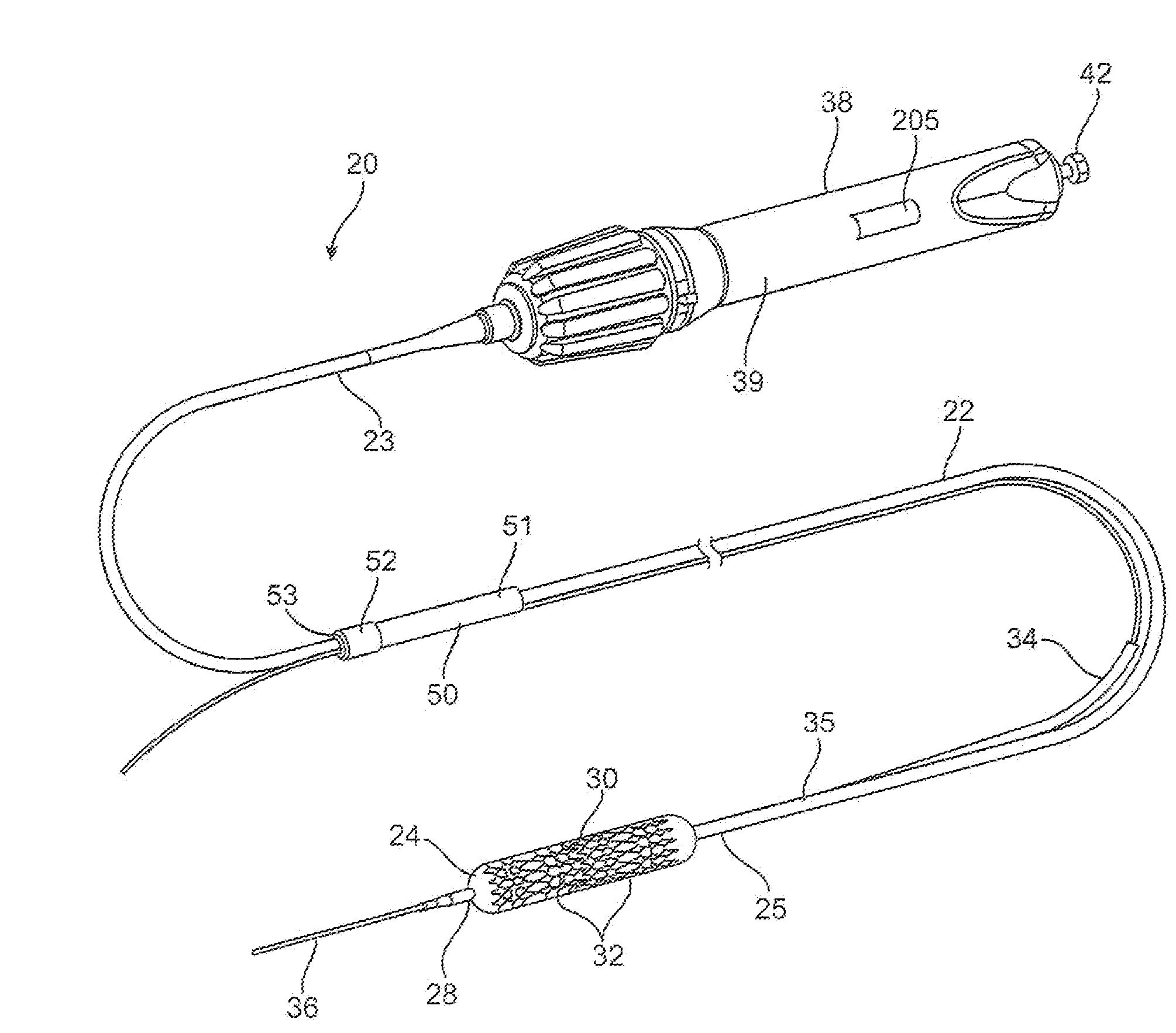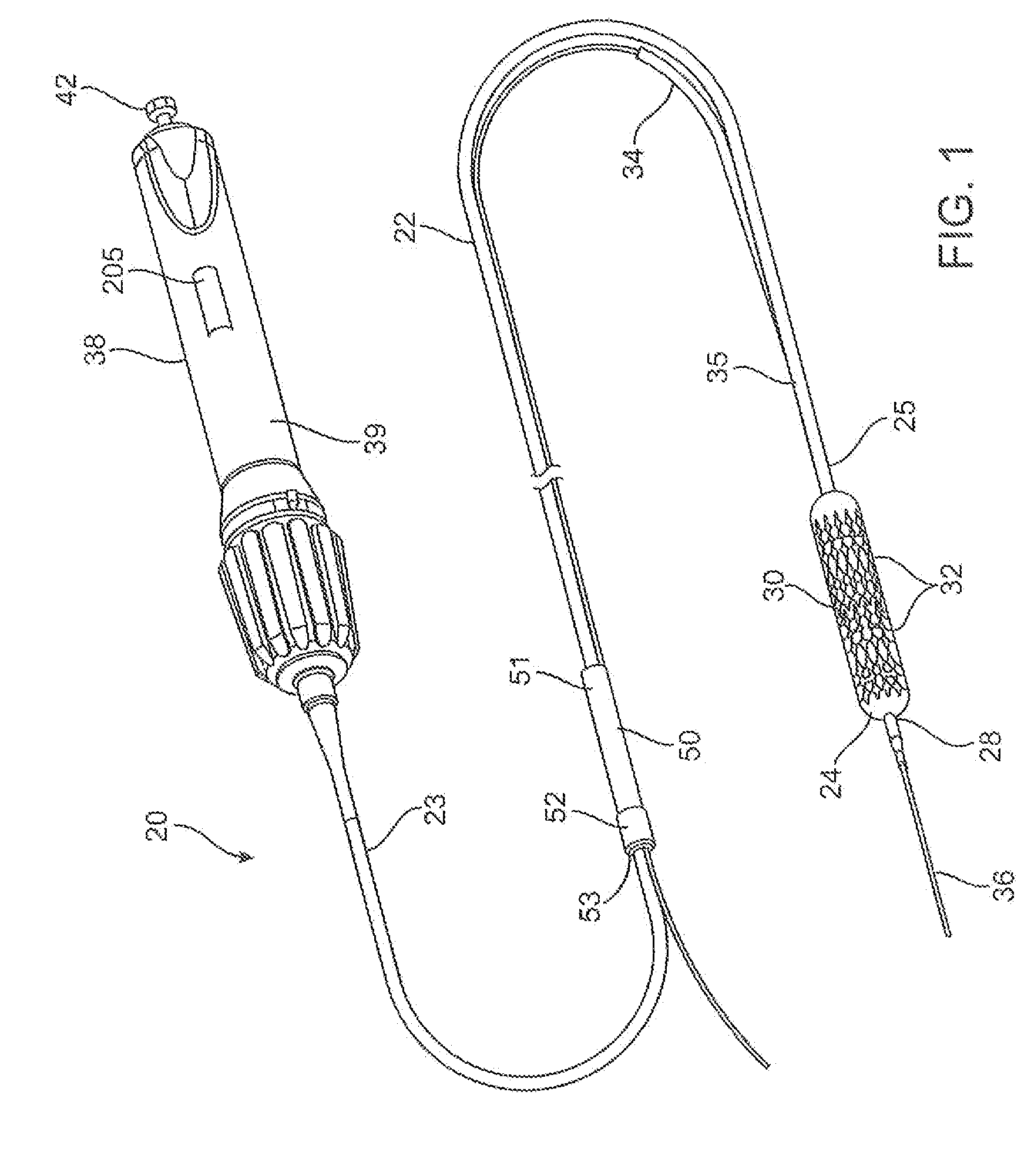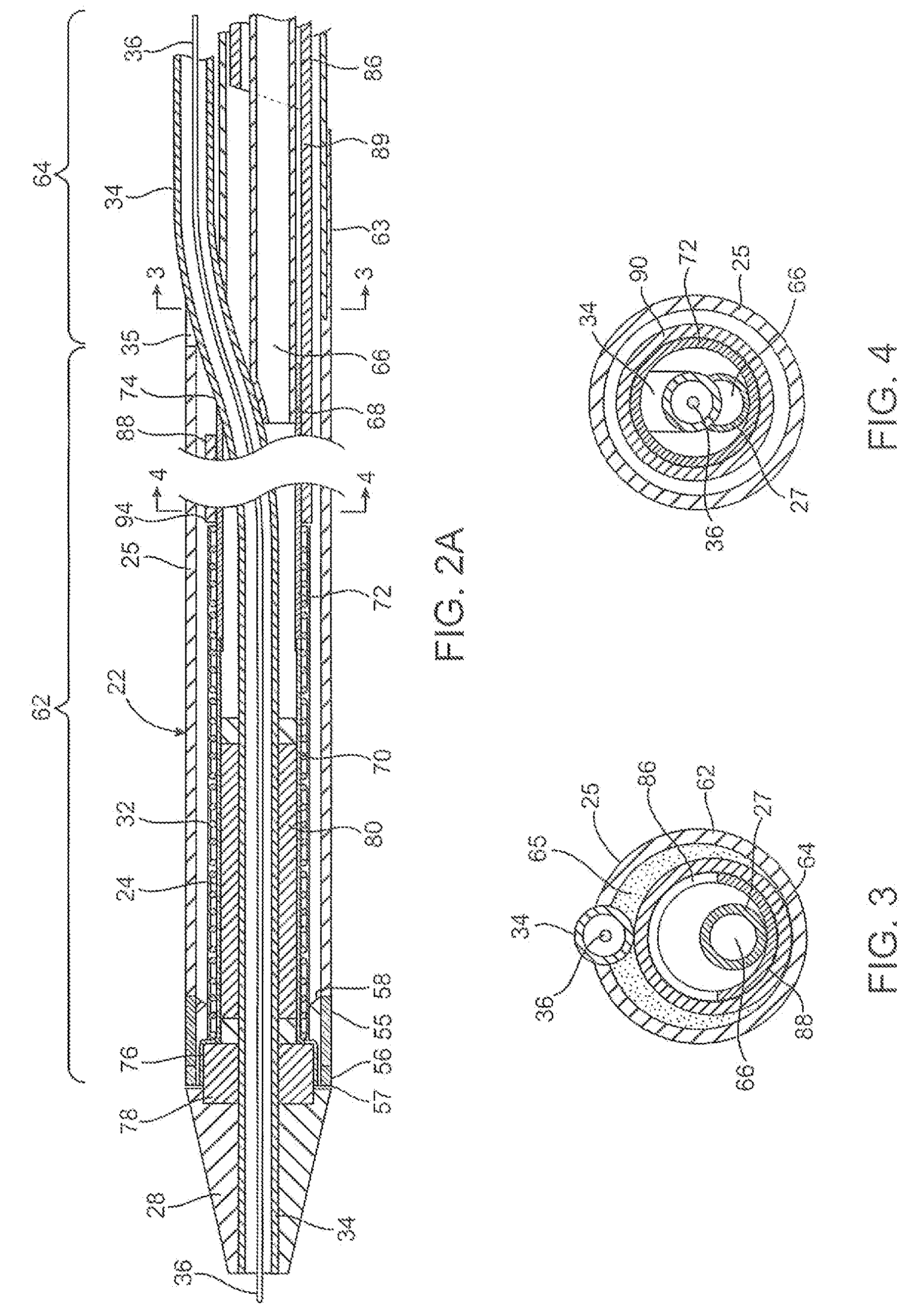Devices and methods for controlling and counting interventional elements
a technology of interventional elements and counting devices, which is applied in the field of interventional catheters and prostheses, can solve the problems of stents, stents, and vascular disease, and achieve the effect of accurately determining the deployed length and facilitating accurate control of the working or deployed length
- Summary
- Abstract
- Description
- Claims
- Application Information
AI Technical Summary
Benefits of technology
Problems solved by technology
Method used
Image
Examples
Embodiment Construction
[0056] The present application relates generally to copending U.S. patent application Ser. No. 10 / 746,466, entitled “Devices and Methods for Controlling and Indicating the Length of an Interventional Element,” filed Dec. 23, 2003, which application is hereby incorporated by reference.
[0057] A first embodiment of a stent delivery catheter according to present invention is illustrated in FIG. 1. The stent delivery catheter 20 includes a catheter body 22 comprising an outer sheath 25 slidably disposed over an inner shaft 27 (not shown in FIG. 1). An expandable member 24, preferably an inflatable balloon (shown in an inflated configuration), is mounted to the inner shaft 27 and is exposed by retracting the sheath 25 relative to the inner shaft 27. A tapered nosecone 28, composed of a soft elastomeric material to reduce trauma to the vessel during advancement of the device, is mounted distally of expandable member 24. A stent 30, which preferably comprises a plurality of separate or sep...
PUM
 Login to View More
Login to View More Abstract
Description
Claims
Application Information
 Login to View More
Login to View More - R&D
- Intellectual Property
- Life Sciences
- Materials
- Tech Scout
- Unparalleled Data Quality
- Higher Quality Content
- 60% Fewer Hallucinations
Browse by: Latest US Patents, China's latest patents, Technical Efficacy Thesaurus, Application Domain, Technology Topic, Popular Technical Reports.
© 2025 PatSnap. All rights reserved.Legal|Privacy policy|Modern Slavery Act Transparency Statement|Sitemap|About US| Contact US: help@patsnap.com



